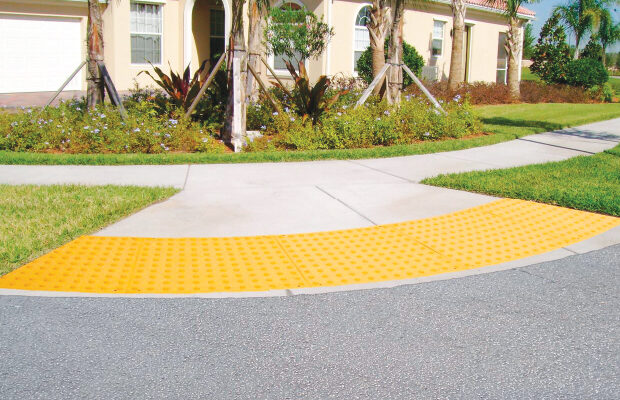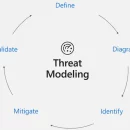Truncated domes refer to the textured mold used to make tactile paving systems which are an integral part of the ADA (Americans with Disabilities Act) requirements. ADA requirements are a set of safety measures implemented in the 1990s in the United States. The technology was originally invented in the 1960s by Japanese engineers who wanted to help the blind navigate more safely on their own to and from school. Later, this technology was adopted by the United States of America, in an effort to make the country more accommodating for the disabled.
To create these tactile alert pavement tiles in a factory, sheets of industrial rubber tile are stamped with a bumpy pattern and cut into the appropriate shapes afterwards. These tiles are placed over sidewalk cement with the intention of alerting pedestrians to dangerous areas where they should be on high alert, such as crosswalks, entrances, dangerous platforms, and curbs. When the blind person feels the bumps under their foot or cane, they know that they are at an important intersection, entrance, crosswalk or boundary. Truncated domes naturally prevent falls even by able-bodied pedestrians. This is because of the no-slip texture that they create on the textile surface.
Texturing these high traffic sections of sidewalk with alerting tiles increases the overall safety for all pedestrians and vehicles. The textured paving tiles come in an assortment of colors like red, stone blue and yellow, making them easily visible from the road. The colors contrast nicely with the color of the gray sidewalk. If planned with thought, the domed tiles can even match the color theme of the rest of the area.
The reason for choosing a truncated dome to pattern the tiles’ texture is well thought out. Any other shaped bump would create a tripping hazard or would make the tile an obstacle rather than help. The tiny, flattened domes allow for ease of travel while still being unmissable when underfoot. It is important that the tiles be kept clean and cleared of any debris that might inhibit their function. Another pattern that is used regularly is long ridges with similarly rounded tops that look like many speed bumps in consecutive rows.
The use of truncated domes on textile pavement will protect public spaces from expensive liabilities such as injuries and death. Their use will also protect citizens and traffic from unnecessary danger. Since their creation and their implementation in this country, it is difficulty to come across an intersection where they do not exist. Hopefully, they will be used everywhere where pedestrian traffic travels.







